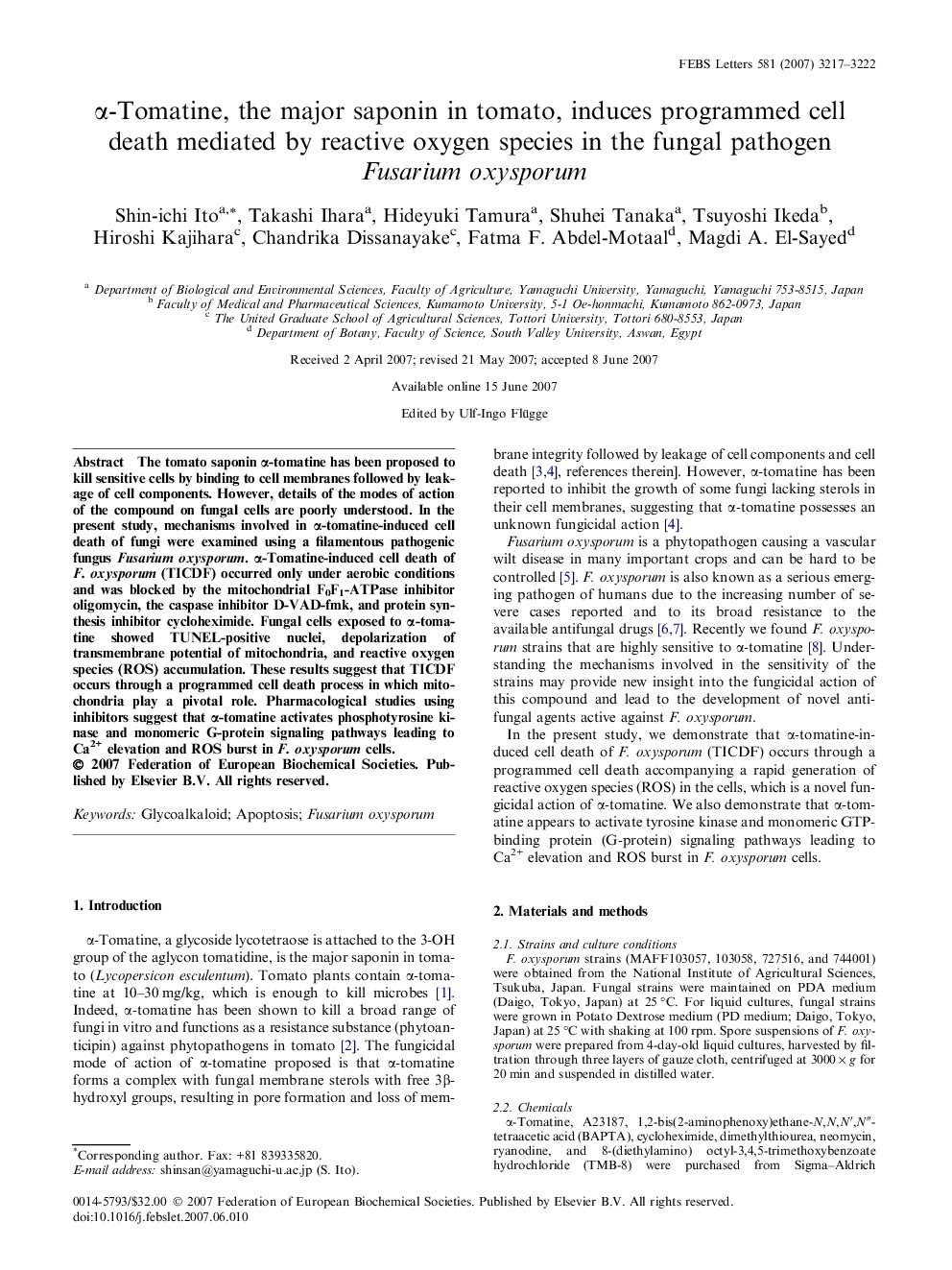| Article ID | Journal | Published Year | Pages | File Type |
|---|---|---|---|---|
| 2050741 | FEBS Letters | 2007 | 6 Pages |
The tomato saponin α-tomatine has been proposed to kill sensitive cells by binding to cell membranes followed by leakage of cell components. However, details of the modes of action of the compound on fungal cells are poorly understood. In the present study, mechanisms involved in α-tomatine-induced cell death of fungi were examined using a filamentous pathogenic fungus Fusarium oxysporum. α-Tomatine-induced cell death of F. oxysporum (TICDF) occurred only under aerobic conditions and was blocked by the mitochondrial F0F1-ATPase inhibitor oligomycin, the caspase inhibitor D-VAD-fmk, and protein synthesis inhibitor cycloheximide. Fungal cells exposed to α-tomatine showed TUNEL-positive nuclei, depolarization of transmembrane potential of mitochondria, and reactive oxygen species (ROS) accumulation. These results suggest that TICDF occurs through a programmed cell death process in which mitochondria play a pivotal role. Pharmacological studies using inhibitors suggest that α-tomatine activates phosphotyrosine kinase and monomeric G-protein signaling pathways leading to Ca2+ elevation and ROS burst in F. oxysporum cells.
